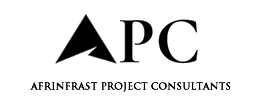
Throughout this year and beyond, progress tracking is evolving from a passive reporting task into a proactive risk management and decision-making tool for teams thanks to AI and other technological advancements, writes Chaitanya Naredla Krishna, CEO and co-founder of Track3D
The year 2025 marks a definitive turning point for the construction industry, undergoing a fundamental shift in how progress is measured, reported and acted upon. This is driven by the convergence of heightened client expectations, real economic pressure and advances in technology.
Owners are no longer willing to wait for monthly updates. They expect near real-time visibility into how work is progressing, without adding reporting burdens to already stretched teams. At the same time, contractors are under pressure to deliver more with fewer people, making manual tracking unsustainable.
This is where AI-powered tools are stepping up. What once felt experimental is now proving its value on active jobsites. The ability to automatically analyse site progress is becoming practical and scalable, thanks in part to how easy it’s become to capture site conditions.
What’s driving the shift in 2025?
The acceleration we’re seeing this year isn’t coincidental. Several forces are aligning to push construction tech adoption beyond early adopters:
1. Cost and labour pressures
With persistent labour shortages, materials inflation and tighter timelines, project teams are being asked to deliver more with less. Tools that reduce rework, delays or time spent on coordination are no longer optional; they’re essential.
2. Demand for transparency
Owners and clients expect visibility into jobsite progress without waiting for monthly reports. AI-powered tracking gives them visibility, in near real-time, with little to no burden on the project team.
3. Maturity of AI and computer vision
Just a few years ago, automated progress tracking demanded specialised equipment, manual effort and deep technical expertise. Today, advancements in AI and computer vision have lowered those barriers significantly. It’s now possible to turn everyday imagery from mobile phones, 360-degree cameras or drones into reliable, actionable insights.
This evolution is making sophisticated construction tech accessible to field teams without needing a dedicated tech stack or deep expertise.
Together, these factors are transforming progress tracking from a lagging activity into a proactive decision-making tool.
From a reporting task to a risk management tool
Construction progress tracking has shifted from a reporting task to a risk management tool. In my experience working with general contractors and trade partners across the US, I’ve seen first-hand how this shift is changing the pace and precision of project delivery.
By reducing manual reporting overhead and giving all stakeholders access to a single source of verified site truth, these tools are transforming coordination, accountability, and daily project control.
Looking ahead: From insight to autonomy
The progress tracking tools gaining traction in 2025 are only the foundation. What’s coming next is an evolution from retrospective reporting to real-time intelligence and autonomous decision support.
As AI continues to learn from vast amounts of project data, progress tracking will evolve from simply describing what happened to predicting what’s likely to go wrong and prescribing actions to avoid it.
The rise of AI agents will drive this transformation. These digital assistants won’t just surface issues; they’ll initiate workflows, alert stakeholders and even trigger on-site actions through integrations with scheduling platforms or robotics systems.
In the near future, a delay in slab pour sequencing could not only be detected automatically but also mitigated through an AI-driven recommendation and even robotically captured progress validation before impacting the critical path.
This evolution also redefines collaboration. When superintendents, project managers and field engineers operate from a shared, continuously updating view of site conditions, decision-making becomes proactive, not reactive. Meetings become shorter, alignment becomes tighter and teams stay ahead of challenges instead of scrambling to catch up.
Importantly, this is not about replacing people; it’s about equipping them with tools that amplify their judgment, speed up their workflows, and extend their reach across the jobsite. As AI and robotics converge with field operations, the real innovation lies in freeing up human talent to focus on what they do best: solving problems, building better, and leading teams forward.
The post AI in construction: Are we closer than we think to a construction site that runs itself? appeared first on Planning, Building & Construction Today.

